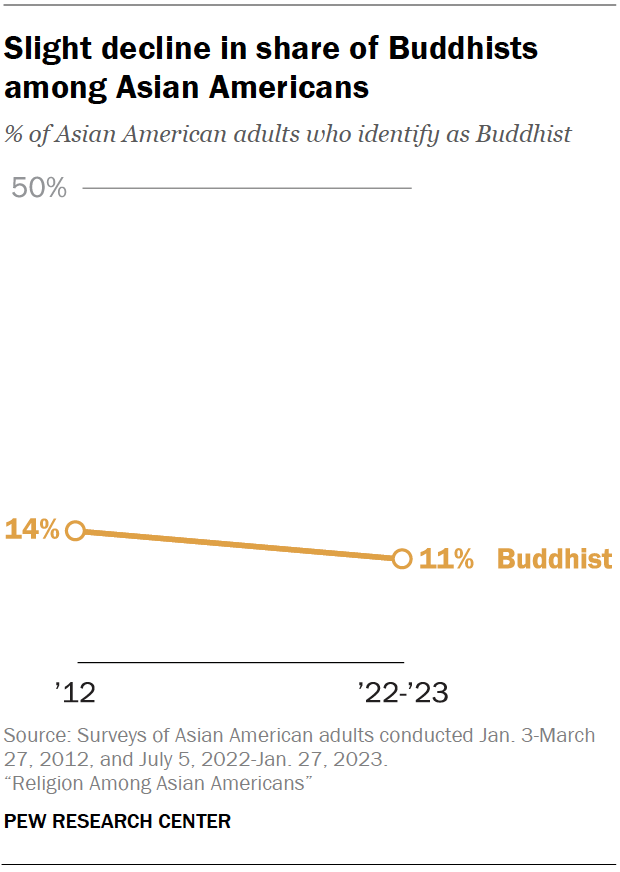
About one-in-ten Asian American adults (11%) say their religion is Buddhism, a slight decline from 14% in 2012. A much larger share (21%) currently say that, aside from religion, they feel close to Buddhism for reasons such as ancestry or culture. In total, one-third of Asian Americans express at least some connection to Buddhism.8
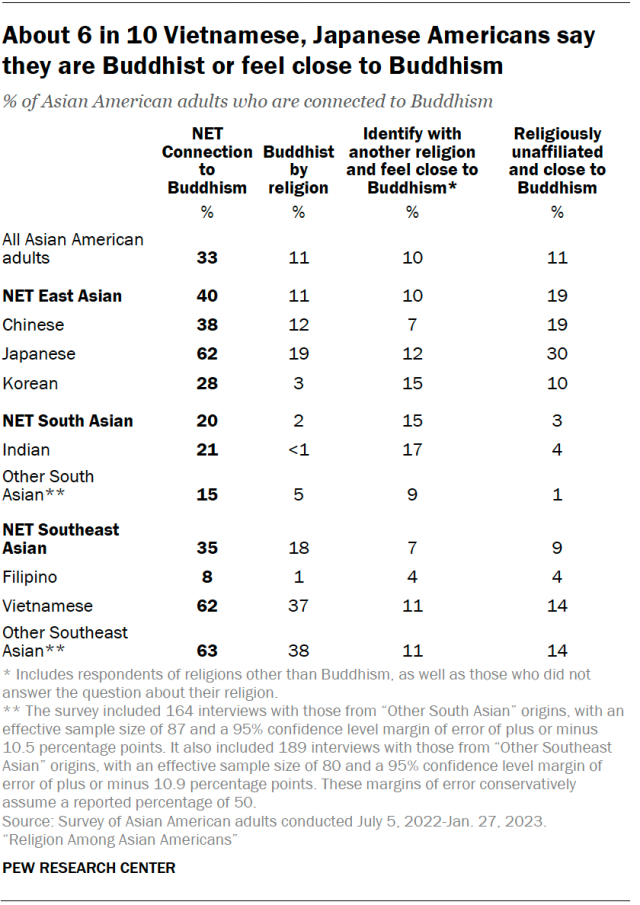
Asian Americans of Southeast Asian origin are the most likely to actually identify as Buddhist. This includes 37% of Vietnamese Americans and 38% of Asian Americans who were born in or trace their ethnic origin to Southeast Asian countries other than Vietnam and the Philippines.
Among East Asian origin groups (Chinese, Japanese and Korean Americans), most respondents who have a connection to Buddhism do not identify as Buddhist but rather say they feel “close to” Buddhism aside from religion. The same is not true among Southeast Asians.
For example, while Vietnamese Americans and Japanese Americans are equally likely (62% each) to express some connection to Buddhism, only 19% of Japanese Americans identify as Buddhist. More Japanese Americans do not identify with any religion but say they feel close to Buddhism aside from religion (30%). Another 12% identify with a religion other than Buddhism but feel close to Buddhism aside from religion.
Importance of religion among Buddhists
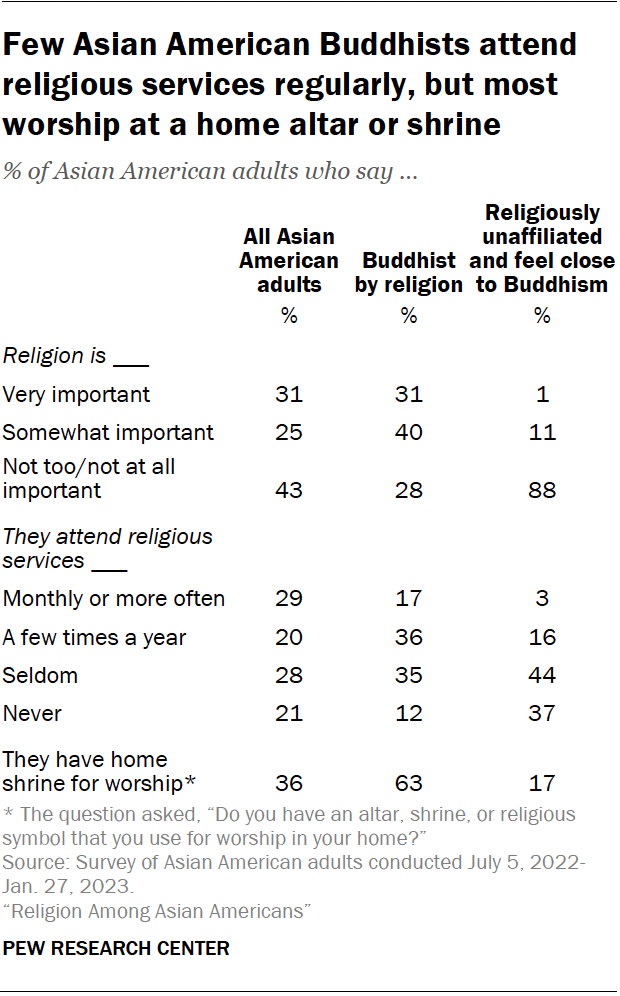
About one-third (31%) of Asian Americans who identify their religion as Buddhism say religion is very important in their lives, while another 40% say it is somewhat important.
Buddhists are less likely to say they attend religious services at least monthly than to say they use an altar, shrine or religious symbol for worship in their home (17% vs. 63%).
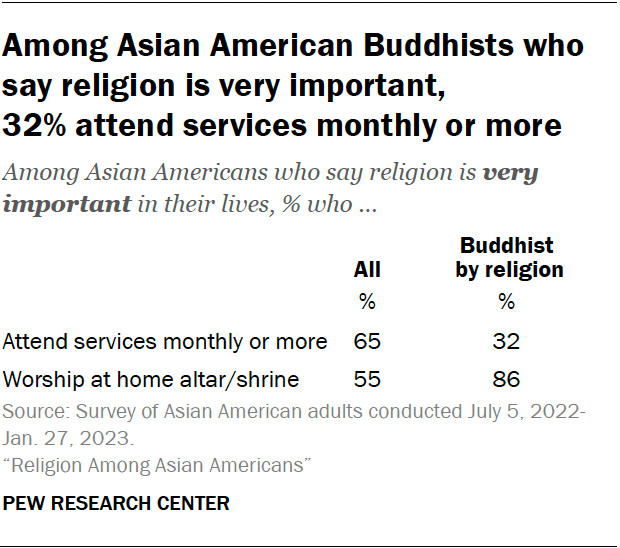
The gap between attendance at religious services and praying at a home altar is even larger among Buddhists who consider religion to have a very important place in their lives. About a third (32%) of this group report that they attend religious services at least monthly, while more than eight-in-ten say they use a shrine, altar or religious symbol for worship in their home (86%).
Yet, among all Asian Americans who say religion is very important in their lives, there is a much smaller gap between the shares who attend religious services at least monthly (65%) and those who use an altar, shrine or religious symbol for worship at home (55%).
Social and demographic profile of Asian American Buddhists
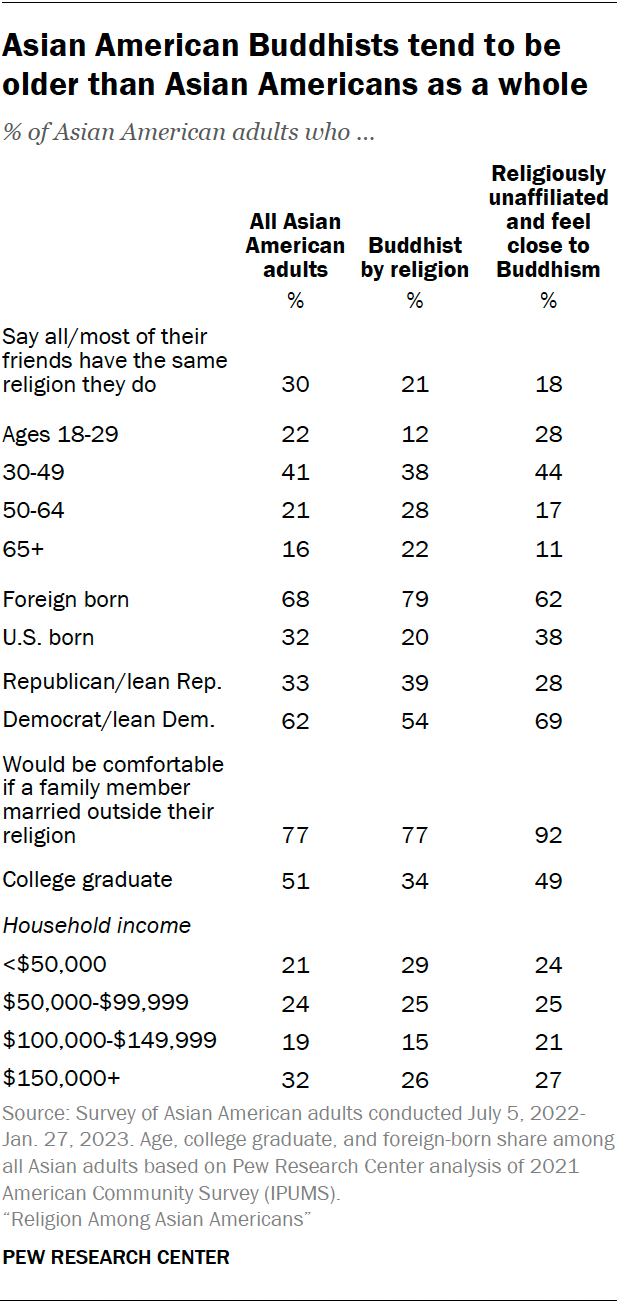
Asian American Buddhists are less likely than Asian Americans overall to say that all or most of their friends share their religion (21% vs. 30%). They are also the oldest of the major religious groups, with half ages 50 or older.
One-fifth of Asian American Buddhists were born in the United States, slightly smaller than the share among the general Asian American population (20% vs. 32%).




